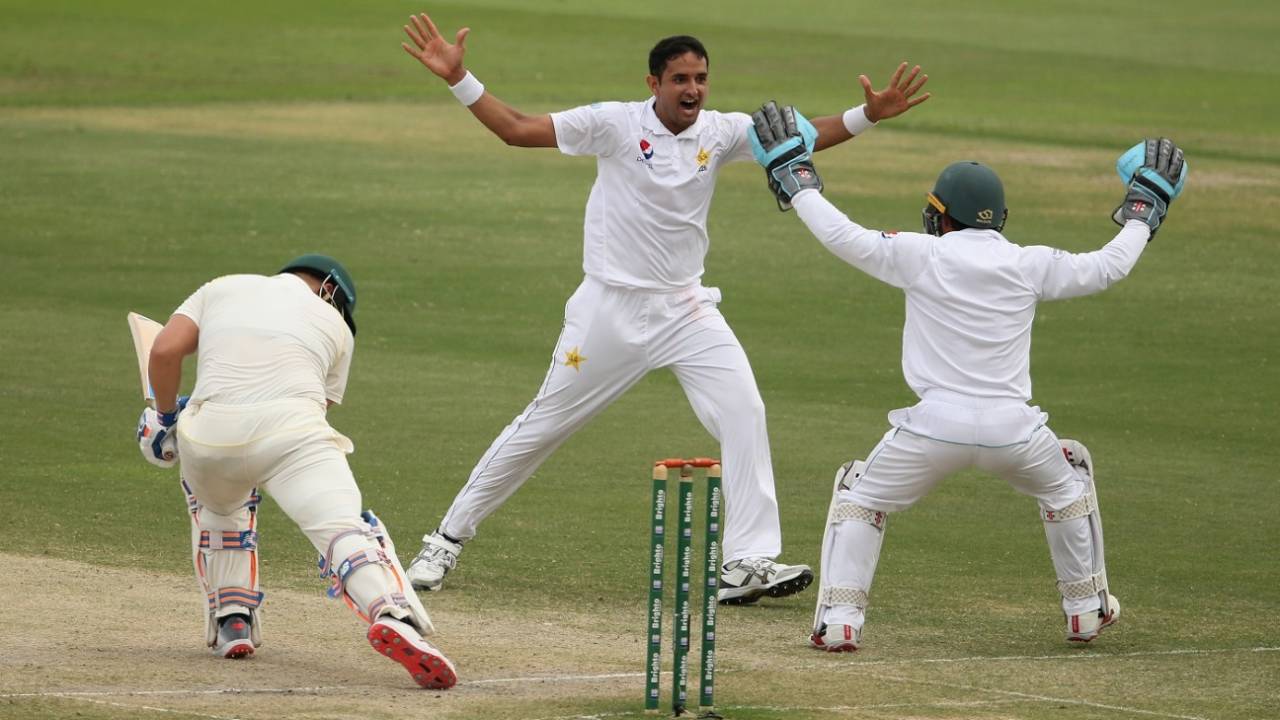What's the most batsmen out bowled in one innings of a Test?
And which Test centurion has the lowest batting average?
Given a minimum of 50 wickets, 37.7% of Mohammad Abbas' dismissals have been lbws, bettered only by Ajantha Mendis' 38.5% • Getty Images
After the second Test against New Zealand, the Pakistan seamer Mohammad Abbas had 23 lbw victims among his 61 Test wickets - that's 37.7%. Given a minimum of 50 wickets, the only man with a higher percentage over a complete career is the Sri Lankan spinner Ajantha Mendis, whose 70 Test wickets included 28 lbws (38.57%).
There have been two Test innings which contained nine men out bowled - but both were a long time ago, when defensive play was not so advanced and it was less usual to use the pads as a second line of defence. The first such occasion was in Cape Town in 1888-89. It was just the second Test match South Africa had ever played, and nine of their batsmen were out bowled: the only one who wasn't, opener Albert Rose-Innes, managed to get himself run out without facing a ball. It happened again in the Ashes Test at The Oval in 1890, when the only Australian batsman not to be bowled was Harry Trott, who top-scored with 25 before giving a catch.
That feat by Bangladesh in the second Test against West Indies in Mirpur over the weekend - their lowest score was the last man Nayeem Hasan's 12 not out - was the 14th occasion that all 11 batsmen had reached double figures in the same Test innings. The last time was nearly three years ago, when South Africa managed it against England in Johannesburg in January 2016 - although their 313 that day was the lowest innings total involved in any of the cases.

After his 14-wicket haul in Pakistan's second Test against New Zealand in Dubai last week, Yasir Shah had 195 wickets in 32 matches. That put him well on course to beat another legspinner, Australia's Clarrie Grimmett, who reached 200 in his 36th Test, back in 1935-36.
The batting of Ajit Agarkar might be best remembered for his horror run of five successive ducks against Australia in 1999-2000 - but he did hit an unbeaten 109 against England at Lord's in 2002. And he actually stands a reasonably respectable ninth on this particular list, with an overall Test average of 16.79.
Steven Lynch is the editor of the updated edition of Wisden on the Ashes
